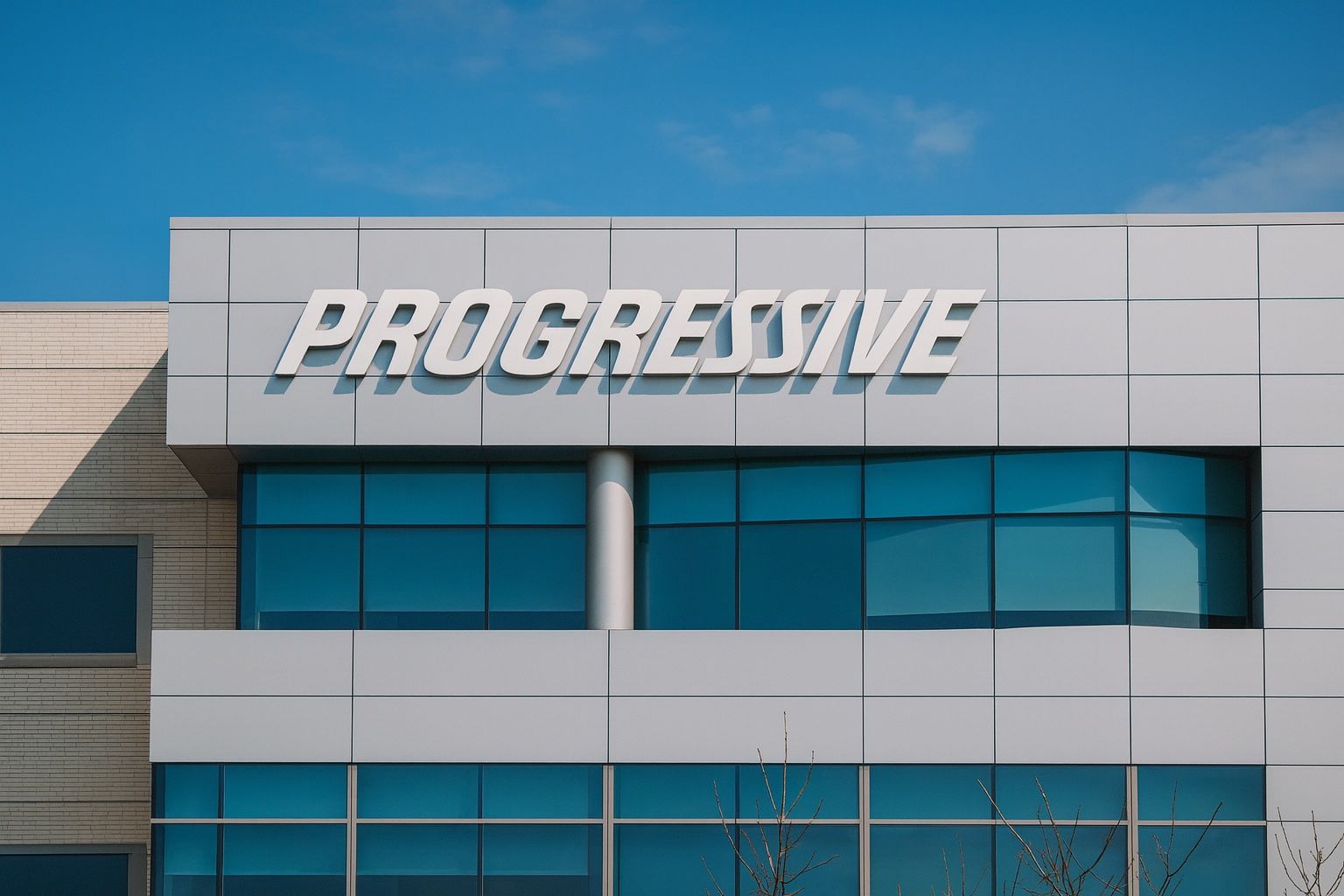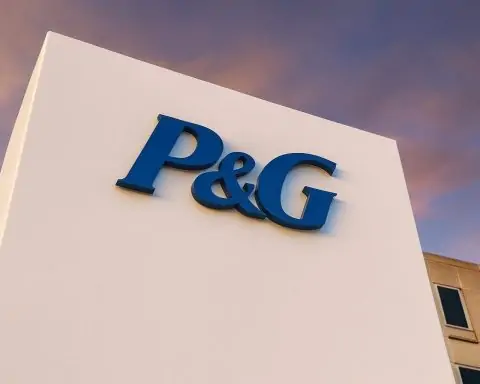- Current Price & Trend: PGR shares plunged to about $220 on Oct. 15, 2025, roughly –8.4% intraday [1]. That marks roughly a 1-year low (last such close was Aug 2024).
- Q3 2025 Results: The insurer reported $2.62 billion net income for Q3 (up ~12% YoY) on $4.45 EPS [2], vs. forecasts near $5.00. Premiums written were $21.38 billion (+10% YoY) [3], driven by strong auto policy growth. Policies in force rose ~12% YoY to ≈38.1 million (38.078 M) [4]. The combined ratio (losses + expenses ÷ premiums) was 89.5%, up from 89.0% a year ago [5] – indicating slightly higher claim costs.
- One-time Charge: Earnings took a hit from a $950 million Florida policyholder credit, required by state law, which depressed Q3 profits (and will not recur) [6].
- Share Reaction: Investors sent PGR down ~8–9% on Oct. 15 [7]. The drop came despite solid premium growth and beat estimates on revenue. (By mid-day Wall Street, PGR was down ~7.8% [8].)
- Analyst Consensus: Out of ~26 analysts, ≈12 rate PGR a “Buy”, ~13 “Hold” and 1 “Sell” [9] – a mixed outlook. Notably, Wells Fargo recently cut PGR to Equal Weight and trimmed its 12‑month price target from $327 to $265, citing slowing policy growth [10].
- Sector Context: The broader insurance sector is poised for double-digit earnings growth. FactSet projects Property & Casualty insurers to see ≈17% earnings growth in Q3 (P&C insurers alone ~27% YoY) [11], as carriers benefit from higher premiums and investment income. However, experts warn rising inflation is cutting into underwriting profit. “P&C companies were confronted by increasing inflation, which pressures combined ratios and reduces underwriting income,” notes FactSet’s Stewart Johnson [12].
With these headwinds, short-term outlook is murky. Some market watchers advise caution: TS2.tech reports that “drums of worry are banging louder each day,” urging investors to hedge (e.g. gold or diversified bets) amid fading liquidity and trade risks [13].
Q3 Earnings – In Line on Revenues, Miss on EPS
Progressive’s official earnings release shows Q3 net premiums written climbed ~10% year-over-year to $21.38B, and net income of $2.615B (EPS $4.45), up 12% [14]. On the surface, premium growth and policy count are healthy: agency auto and direct auto policies are each up ~15% from last year. However, EPS lagged estimates (Street view was ~$5.0), mainly due to the one-off Florida credit. That $950M charge hit bottom-line profit (it’s tied to Florida’s profit-cap law) [15]. Stripping that out, underlying underwriting results were solid. Still, the combined ratio did tick up to 89.5% from 89.0% in Q3 2024 [16], reflecting slightly higher catastrophe and loss costs (including some late Hurricane Helena claims and weather events).
In other words, Progressive’s core auto insurance business grew normally, but margins have tightened. As one analyst comment noted, the Florida adjustment “amplif[ies] concerns that PGR’s underwriting margins have peaked” [17]. Indeed, the combined ratio for September alone was 100.4%, up from 83.1% last September [18] – a red flag for Q4 if it persists.
Stock Performance & Technicals
After the release, PGR stock dropped sharply. On Oct. 15 it opened around $240 and fell to ~$220 within hours [19] [20]. That ~8–9% slide is the largest one-day drop since August 2024. Over the past week the stock had already fallen ~5% in anticipation of the earnings report. (Year-to-date through Oct. 14, PGR is roughly flat.) At ~$220, Progressive trades at about 14× forward EPS, near the low end of its 5-year range. Its dividend yield is modest (~2.0%).
Technically, the break below $230 (a recent support) raises the risk of further near-term weakness. Short-term traders may watch whether PGR can hold above the $215–220 zone. A rebound could occur if markets stabilize, but failure below these levels might test the ~$200 area. For now, many strategists have turned cautious. As Seeking Alpha’s summary bluntly put it, “PGR shares remain a Hold as valuation is full,” and some suggest waiting for a pullback into the low $210s before adding [21].
Insurance Sector Outlook
Progressive’s fate is tied to the broader personal auto insurance market. Insurers overall are benefiting from rate increases: customers are paying more for car and home policies amid higher accident and repair costs. That drove premium growth across the industry this year. But loss costs (claims) are rising too. Inflation pushes up repair and medical costs, eroding underwriting gains. As noted by FactSet, P&C insurers generally “enjoyed strong equity markets” boosting investment income, but also saw underwriting income squeezed by inflation [22].
Peers like Allstate (NYSE:ALL) and State Farm have seen similar trends. Allstate reported robust premium growth in prior quarters and its P&C combined ratio also drifted slightly higher, though still solid. Regulatory relief (like Florida’s reforms) remains a wild card. Progressive itself got hit by Florida’s law in Q3, as regulators ordered refunds, but that issue should ease next year.
Analysts’ Take & Forecasts
Analyst sentiment on PGR is mixed. The recent Wells Fargo note (post-Q2) warned that policy growth may slow as auto premiums get very high, hence the cut to “Equal Weight” [23]. Others still see long-term strength: Baptista Research (on Smartkarma) highlights Progressive’s product diversity and tech edge as drivers of market share. FactSet notes insurance earnings should remain strong into late 2025 (industry earnings growth mid-teens%).
As for PGR’s price forecast, targets cluster mostly in the $250–300 range before the latest results; some will likely be trimmed on the miss. The median 12-month target was around $270, implying modest upside from current levels. Fundamental analysis suggests the stock isn’t deeply cheap given its historic premium multiples. However, if market volatility remains low and economic conditions hold up, “earnings should bolster insurance profits” [24] over the medium term.
Bottom Line – Is It Time to Buy?
Progressive’s near-term outlook is uncertain. The disappointing EPS and higher combined ratio signal that after a big run-up, the stock faces a pause. In the short term, technical selling could continue if broader markets wobble. On the other hand, fundamentals (strong premium growth and industry-tailwinds) are intact, and the Florida charge is non-recurring.
As one market expert advises, caution is warranted: TS2.tech notes that while markets have rallied, “drums of worry are banging louder each day,” suggesting investors hedge and avoid complacency [25]. For PGR investors, that means watching upcoming data (Q4 inflation, claim trends) closely. If the stock finds a floor and industry pressures ease, long-term investors might view any dip as a chance to accumulate.
Sources: Progressive’s Oct. 15, 2025 financial release [26] [27]; Reuters/Investing.com news [28] [29]; industry analysis [30] [31]; analyst commentaries and Smartkarma [32] [33]; TS2.tech market newsletter [34], among others.
References
1. www.marketscreener.com, 2. www.investing.com, 3. www.marketscreener.com, 4. www.investing.com, 5. www.marketscreener.com, 6. www.theinsurer.com, 7. www.theinsurer.com, 8. www.reuters.com, 9. www.smartkarma.com, 10. www.gurufocus.com, 11. insight.factset.com, 12. insight.factset.com, 13. ts2.tech, 14. www.globenewswire.com, 15. www.theinsurer.com, 16. www.globenewswire.com, 17. seekingalpha.com, 18. www.smartkarma.com, 19. www.marketscreener.com, 20. www.theinsurer.com, 21. seekingalpha.com, 22. insight.factset.com, 23. www.gurufocus.com, 24. insight.factset.com, 25. ts2.tech, 26. www.globenewswire.com, 27. www.globenewswire.com, 28. www.marketscreener.com, 29. www.reuters.com, 30. insight.factset.com, 31. insight.factset.com, 32. www.smartkarma.com, 33. seekingalpha.com, 34. ts2.tech








